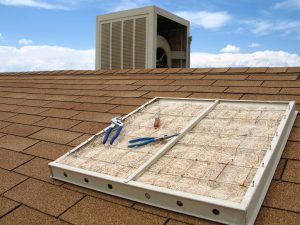ERVs and HRVs are very similar in how they operate to help improve indoor air quality. However, there are some key differences that might make you want to choose one over the other. How do you know which one is the right choice for your home?
You can keep reading to learn more about the differences between ERVs and HRVs so you can decide which one fits your indoor air quality needs and expectations. Then you can give our team a call for energy recovery ventilators in Grosse Pointe, MI, where we can walk you through how one of these unique systems would be set up and how it can help improve your indoor air quality.
ERV and HRV Similarities
ERVs and HRVs are similar, so we’re going to cover the ways that they work the same first before going into more detail about the differences.
Both systems are designed to recuperate some of the energy from exhaust air leaving your home. An ERV or HRV then transfers the recovered energy into either heated or cooled air that is blowing into your home. The benefit of this addition is reducing strain on your HVAC unit by having pre-heated or pre-cooled air enter the HVAC system to boost efficiency.
You also enjoy an added boost to indoor air quality since these systems bring in some fresh outdoor air around the clock while filtering out stale air. This reduces the dust, allergens, and germs that cycle through your HVAC system and back into your home.
Heat Recovery Ventilators
An HRV system is the base model of the two options. It primarily transfers heat one way or the other depending on the season. In the winter, it transfers heat from the exhaust air leaving your home so that you lose less warmth in between heating cycles. In the summer, it transfers heat from the air coming into your home to pre-cool air before it enters your HVAC system.
The two airflow streams never actually mix together with an HRV. Instead, the system exchanges heat through conduction. You can expect the system to recover anywhere from 55% to 75% of the energy, ultimately helping to lower your monthly energy costs.
Energy Recovery Ventilators
An ERV system works in the same way to transfer heat, but also has the ability to balance humidity levels. With an ERV, the two air streams—outgoing air and incoming air—mix together to transfer moisture in one direction or the other.
In the summer when humidity can make your home feel warmer, extra moisture transfers outside. In the winter when humidity can help to give your home an added boost of comfort, the moisture gets transferred to the stream of air entering your home.
Choosing between an HRV or ERV comes down to your needs and expectations. If your home generally has lower humidity levels, an HRV may be just fine. But if you want to improve the humidity levels in your home year-round, an ERV is the better choice.
Contact Charter Home Comfort today to schedule an appointment with our professionals for indoor air quality service. Old fashioned values with tech savvy results!

